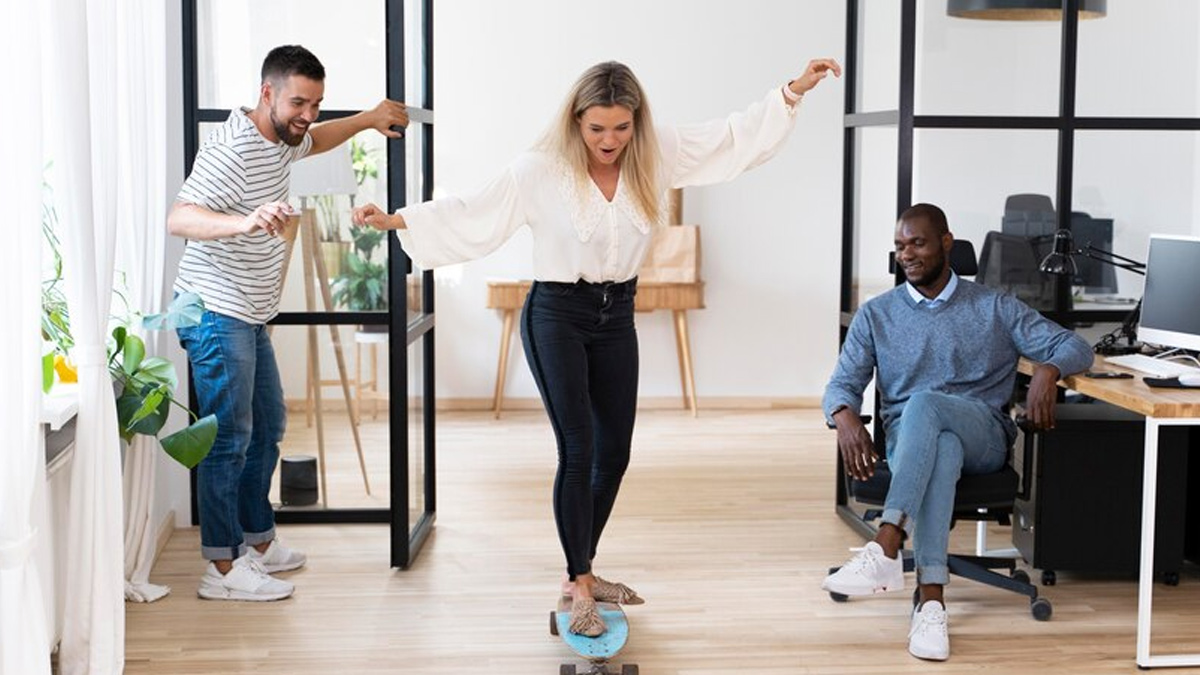
In our increasingly digital world, many of us find ourselves glued to our seats, be it at work, during commutes, or while unwinding at home. While sitting is a natural part of daily life, spending too much time seated can have serious health consequences. Studies have shown that prolonged sitting is linked to a higher risk of heart disease, diabetes, and even certain cancers. Moreover, sitting for extended periods can lead to poor posture, back pain, and decreased mental well-being. It's clear that our sedentary habits are taking a toll on our health.
Table of Content:-
To understand how a sedentary lifestyle can harm your health, the OnlyMyHealth team spoke to Dr Shubhada K, Chief Ergonomist, Interio.
Effects of Long Sitting Hours On Your Health
Research from the Godrej Interio Workplace and Ergonomics Research Cell indicates that 67% of workers sit for 10–11 hours daily, with 76% experiencing musculoskeletal issues. According to Dr Shubhada, “This sedentary lifestyle, fueled by reliance on smartphones, laptops, and desk jobs, has transformed sitting from a harmless activity into a health hazard.”
Technological advancements have inadvertently encouraged sedentary behavior. Dr Shubhada says, “Employees spend hours hunched over screens, exposing their spines to up to 190% more compressive force compared to standing. This strain can lead to disc degeneration, chronic back pain, reduced blood circulation, and weakened muscles.”

Prolonged sitting is also linked to severe health risks. Studies reveal that excessive sitting increases cardiovascular disease risk by 64% and diabetes risk by 112%. “Metabolic syndrome, characterised by high blood pressure, excess body fat, and abnormal cholesterol levels, is more common among sedentary individuals. Alarmingly, just five days of inactivity can raise insulin resistance, further increasing diabetes risk,” Dr Shubhada said.
Prevention Of Health Problems Due To Sedentary Lifestyle
Addressing these risks requires a multifaceted approach. Dr Shubhada suggests, “Ergonomic solutions, such as chairs with proper lumbar support, adjustable seating, and technologies like TrackBack, can help.” It ensures consistent spinal support across upright and reclined postures, reducing pressure and promoting alignment.

Practical strategies for individuals include:
- Taking frequent standing breaks and incorporating micromovements.
- Using sit-stand desks to alternate between sitting and standing.
- Maintaining a neutral sitting posture with feet flat on the floor, knees at a 90-degree angle, and screens at eye level.
Modern ergonomic chairs now feature innovations like forward tilt mechanisms, smart recline adjustments, and 4D armrests. These designs minimise the negative effects of sitting by supporting the body's natural movement and maintaining spinal health.
Workplace interventions also play a crucial role. “Creating ergonomic workstations, educating employees on proper sitting techniques, and encouraging regular movement can significantly reduce the health risks of prolonged sitting,” Dr Shubhada recommended.
While sitting is inevitable in today's work environments, it does not have to compromise health. By understanding the associated risks and adopting ergonomic and lifestyle changes, individuals can effectively mitigate the negative effects of sedentary behavior.
Also read: Sedentary Life: Know Easy Lifestyle Modifications To Live Healthy
Importance of Movement And Physical Activity

Movement is key. Dr Shubhada emphasises, “Small changes in sitting habits, such as standing more often and using supportive furniture, can have a substantial impact on long-term health and well-being. The future of workplace health lies in integrating design and technology to promote movement, ensure proper posture, and prioritize overall wellness,”
Incorporating regular physical activity into daily routines is essential. Engaging in exercises that strengthen the core and back muscles can counteract the adverse effects of prolonged sitting. Employers can support this by providing spaces for movement and encouraging a culture that values health and activity.
Conclusion
Ultimately, awareness and proactive measures are vital. By recognising the unseen dangers of extended sitting and implementing ergonomic solutions alongside active habits, we can foster healthier lifestyles and work environments.
Also watch this video
How we keep this article up to date:
We work with experts and keep a close eye on the latest in health and wellness. Whenever there is a new research or helpful information, we update our articles with accurate and useful advice.
Current Version